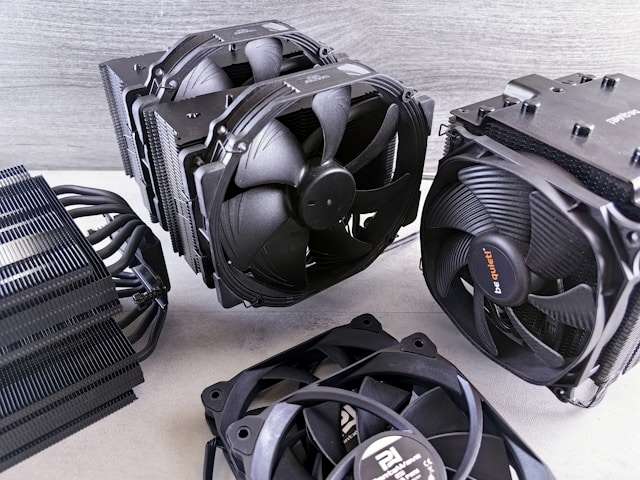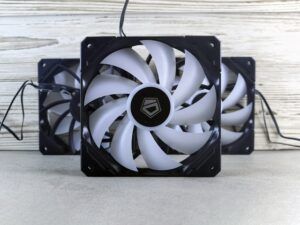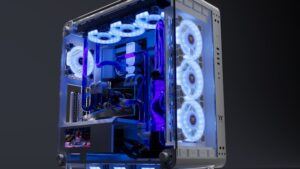
Keeping your PC cool is crucial for maintaining performance and prolonging the life of your components, especially when it comes to gaming, editing, or heavy multitasking. Without proper cooling, your PC might overheat, leading to lag, sudden shutdowns, or even long-term damage. In this guide, we’ll explore why PC cooling matters, and take a look at air cooling, liquid cooling, and some alternative methods that are gaining popularity.
Why PC Cooling is Important
Heat is a natural byproduct of your computer’s work, from processing data to running applications. CPUs and GPUs are particularly prone to generating heat under heavy use, and without sufficient cooling, they can reach temperatures that impact performance and stability.
The Effects of Overheating
When a PC gets too hot, it starts “thermal throttling.” This means that the CPU or GPU automatically slows down to avoid further overheating. You might notice stuttering in games, lag in software, or sluggish overall performance. In extreme cases, overheating can lead to shutdowns to protect the hardware from permanent damage.
The Benefits of Efficient Cooling
Having an efficient cooling system not only helps keep your PC performing at its best but also extends the lifespan of your components. Cooler temperatures allow the hardware to run optimally, which is especially important for users who demand high performance, such as gamers, video editors, or anyone running intensive applications.
Air Cooling: Affordable and Effective
Air cooling is the most common method of PC cooling. It’s easy to set up, reliable, and budget-friendly, making it a go-to choice for most users.
How Air Cooling Works
Air cooling relies on fans and heatsinks. A heatsink is a piece of metal that absorbs heat
Pros of Air Cooling
- Affordability: Air coolers are generally cheaper than liquid cooling systems.
- Reliability: Air cooling is simpler with fewer components, so there’s less that can go wrong.
- Easy to Install and Maintain: Air coolers require little maintenance beyond occasional dusting and cleaning.
Common Issues with Air Cooling
- Noise: Multiple fans can be noisy, especially under heavy loads. There are quiet fans available, but they may come at a higher price.
- Performance Limitations: Air cooling may not be as effective for overclocked CPUs or high-performance PCs that generate a lot of heat.
If you’re a casual gamer or don’t push your PC too hard, air cooling is a reliable and budget-friendly option. Look for an aftermarket air cooler if you want improved cooling and reduced noise.
Liquid Cooling: Advanced Cooling for High Performance
Liquid cooling is often preferred by enthusiasts or those who want more efficient cooling for overclocked or high-performance builds. This method is powerful and looks pretty cool in the case.
How Liquid Cooling Works
Liquid cooling uses a liquid (usually distilled water or a special coolant) to transfer heat
Pros of Liquid Cooling
- Effective Cooling: Liquid cooling is excellent for high-end builds, as it can handle more heat than air cooling.
- Quieter Operation: Since liquid cooling can be more efficient, it may require fewer or slower fans, resulting in a quieter system.
- Aesthetic Appeal: Custom liquid-cooling systems come with customizable tubes and lighting, making them visually striking.
Types of Liquid Cooling Systems
- All-in-One (AIO) Coolers: These are pre-built liquid cooling systems that are easy to install, making them a popular choice for beginners who want to try liquid cooling.
- Custom Loop Cooling Systems: These systems allow more control over the setup and appearance, but they require more time and skill to assemble.
Common Issues with Liquid Cooling
- Higher Cost: Liquid coolers are generally more expensive than air coolers, especially custom loops.
- Risk of Leaks: Although rare, liquid cooling systems can develop leaks, which can damage components if not caught in time.
- Regular Maintenance: While AIOs require little maintenance, custom loops need more care, including checking coolant levels and occasionally flushing out the system.
If you’re a gamer, a content creator, or someone who likes to push their PC to the limit, liquid cooling might be worth the investment. For beginners, an AIO cooler is a good way to start with liquid cooling.
Alternative Cooling Methods and Innovations
For those who are really into pushing boundaries, alternative cooling methods can offer even better cooling, though they come with additional costs and complexity. Here’s a look at some innovative cooling options.
1. Passive Cooling
Passive cooling uses heatsinks without any fans, relying entirely on the design of the heatsink to dissipate heat. It’s a completely silent cooling option, but it’s less effective for high-performance systems. Passive cooling is usually found in low-power devices or in certain specialized desktop systems.
2. Phase-Change Cooling
This is one of the most powerful cooling methods available, mainly used by extreme over clockers. Phase-change cooling works similarly to a refrigerator, using a coolant that changes from a liquid to a gas to absorb heat. It provides very low temperatures but requires a lot of power, and it’s quite bulky and expensive.
3. Mineral Oil Cooling
Mineral oil cooling involves submerging a PC’s components in mineral oil, which absorbs heat effectively without damaging electronics. This method is mostly for enthusiasts looking for a unique setup, as it requires a special container and regular maintenance, but it’s visually impressive and very effective.
4. Peltier Cooling (Thermoelectric Cooling)
Peltier cooling uses thermoelectric plates to create a temperature difference that cools one side while heating the other. While it can cool CPUs very effectively, it tends to produce condensation, which can be problematic. This method is typically used by hardcore enthusiasts and requires extra insulation and preparation.
Choosing the Right Cooling System for You
When deciding on a cooling solution, think about your PC’s workload and your budget:
- Light Use (Browsing, Office Work): Air cooling is typically sufficient. Even a stock cooler that comes with the CPU should work for basic tasks.
- Moderate Use (Casual Gaming, Editing): Aftermarket air coolers or basic liquid cooling (like an AIO cooler) can offer improved performance and lower noise levels.
- High-Performance Use (Intensive Gaming, Overclocking): Advanced liquid cooling solutions or high-performance air coolers will help maintain stable temperatures and boost longevity.
- Enthusiast Builds: If you’re building a showcase PC or pushing for extreme performance, custom liquid cooling or even alternative methods like phase-change cooling could be worth exploring.
Remember, the best cooling system is one that meets your needs without overshooting your budget. By keeping your PC cool, you’ll enjoy better performance and longer-lasting components, which is worth every penny in the long run.
